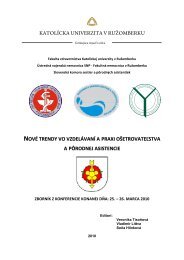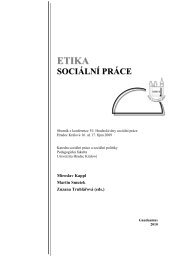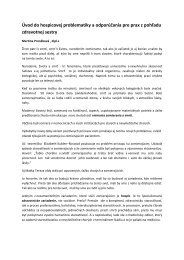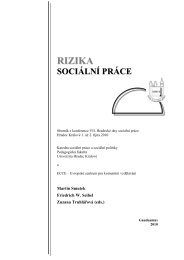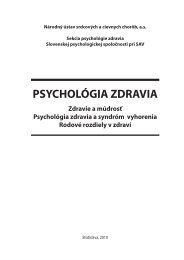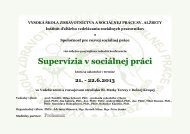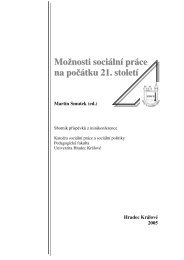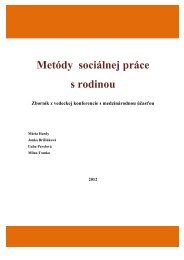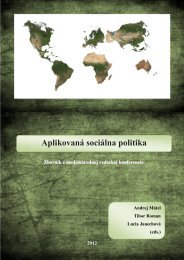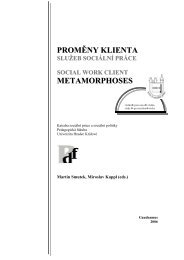Zmena klÃmy â možný dopad (nielen) na obyvateľstvo - Prohuman
Zmena klÃmy â možný dopad (nielen) na obyvateľstvo - Prohuman
Zmena klÃmy â možný dopad (nielen) na obyvateľstvo - Prohuman
You also want an ePaper? Increase the reach of your titles
YUMPU automatically turns print PDFs into web optimized ePapers that Google loves.
Because of the growing health crisis of antibiotic resistance, which could render<br />
these “wonder drugs” useless in treating infections, the American Medical<br />
Association now opposes the routine feeding of antibiotics to healthy farm animals.<br />
The American College of Preventive Medicine, the American Public Health<br />
Association, and the World Health Organization have taken similar positions.<br />
A Natio<strong>na</strong>l Academy of Sciences report estimates that elimi<strong>na</strong>ting all such uses<br />
in poultry, cow, and swine production would cost US consumers only about $5<br />
to $10 per person annually. The Centres for Disease Control and Prevention has<br />
observed that “decreasing i<strong>na</strong>ppropriate antibiotic use is the best way to control<br />
resistance.” Key steps in doing so include adoption of policies aimed at ending the<br />
i<strong>na</strong>ppropriate use of antibiotics in agriculture, as well as continued implementation<br />
of programs to educate patients, parents and physicians about the need to<br />
use antibiotics more sparingly.<br />
HIV and Climate Chang Complex<br />
They argued that the widespread food crisis in sub Saharan Africa (SSA) in the<br />
early 2000s could not be fully explained by the region’s periodic droughts (whether<br />
or not the frequency or severity of these droughts is changing). Instead, they<br />
proposed the high prevalence and incidence of HIV as an overarching reason to<br />
explain these changes. They suggested that the AIDS epidemic accounts for why<br />
many households are facing food shortages and have difficulty recovering from<br />
droughts. They identified four new factors: (1) household level labour shortages<br />
due to adult morbidity and mortality and a rise in numbers of dependants; (2)<br />
loss of assets and skills resulting from increased mortality; (3) the burden of care<br />
for sick adults and children orphaned by AIDS; and (4) vicious interaction exists<br />
between malnutrition and HIV. We agree that these feedbacks and links are<br />
highly plausible connections between HIV, regio<strong>na</strong>l agricultural productivity, and<br />
regio<strong>na</strong>l food security.<br />
According to the IPCC, there have also been several important climatic changes<br />
in SSA in recent decades. These include increased inter-annual rainfall variability<br />
since 1970, with higher rainfall anomalies and more intense and widespread<br />
droughts. In some parts of southern Africa (e.g., Angola, Namibia, Mozambique,<br />
Malawi and Zambia) a significant increase in heavy rainfall events has also been<br />
observed together with evidence for changes in seaso<strong>na</strong>lity and weather extremes.<br />
These changes are consistent with anthropogenic CC, and it is likely that these<br />
trends will intensify. Thus, while much of the recent deterioration in food security<br />
56





